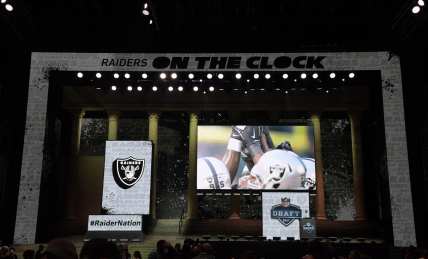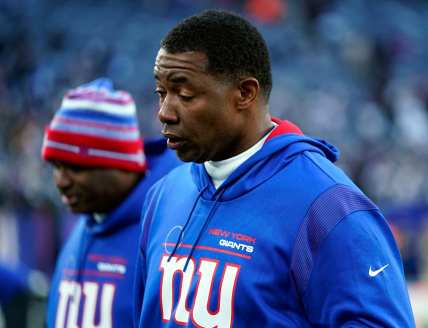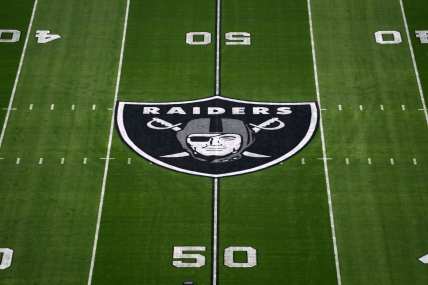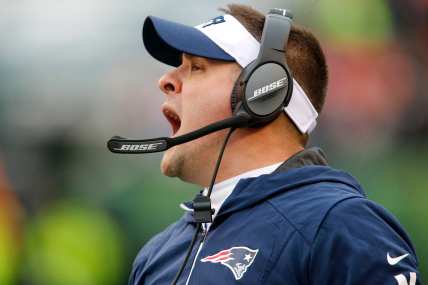Though the Las Vegas Raiders just made the playoffs, incoming general manager Dave Ziegler and head coach Josh McDaniels have work to do, starting with some pressing questions that need answers.
In addition to the fanbase’s favorite topic (what’s next for Derek Carr?), team brass must contemplate a plan for a recent first-rounder, a trio of top draft picks from a few years ago and players who have exceeded expectations.
During the offseason, front offices have to dive into the numbers and make decisions on how to handle several contracts.
Is it time for the Raiders to open the checkbook for their best players eligible for extensions? Who’s worth a fifth-year option? How much roster turnover should we expect after a decent season?
We have major questions and realistic answers for you.
What position will Alex Leatherwood play?
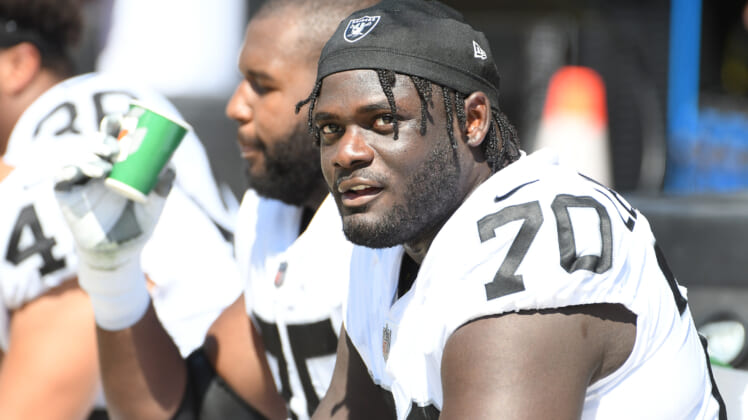
Don’t expect the new coaching staff to demote Alex Leatherwood to a backup yet, and it’s too early to call him a bust. He’s played 17 games and changed positions with the season in progress. The Alabama product will likely start in 2022, but at what spot?
After Week 4 of the season, the Raiders shifted Leatherwood to right guard. While he had some decent games on the interior, he continued to struggle with pre-snap penalties. By the end of the campaign, he allowed eight sacks and committed 14 infractions, per Pro Football Focus.
We might get a clue about Leatherwood’s role early in free agency. If Ziegler targets a high-priced tackle or guard, the 2021 first-rounder will settle into the other position.
Related: Top NFL free agents of 2023 – Lamar Jackson, and Deebo Samuel lead the charge
Answer: Leatherwood starts at right guard
The Las Vegas Raiders can move Leatherwood back to right tackle and prepare Denzelle Good to become the placeholder option at right guard, which is an easy fix, though the former seems best suited to play inside because he doesn’t mirror speed rushers well and loses to edge-rushers who make good use of their hands to knock him off balance.
Ideally, the Raiders should keep Leatherwood inside where his athleticism can shine against guards. In closed quarters, he can still use his strength and length to match up with stout 300-plus-pounders who generally have less agility than perimeter blockers.
Next to a solid veteran tackle who can help a young offensive lineman in his early developmental stages, Leatherwood could show some improvement. In the best-case scenario, Vegas would have a decent long-term guard capable of elevating its ground game.
Related: Las Vegas Raiders roster review – Offensive line
Does the defensive line need a complete makeover?
This past season, under Gus Bradley, the defensive line made significant strides and oftentimes spearheaded impressive defensive performances, especially down the stretch during the team’s four-game win streak.
Going into the 2022 offseason, defensive tackles Johnathan Hankins, Quinton Jefferson, Solomon Thomas, Gerald McCoy and Darius Philon have expiring contracts.
At 33 years old, coming off a torn ACL, McCoy is close to the end of his playing career. Philon, who tore his patellar tendon in Week 18 against the Los Angeles Chargers, has previous ties to Bradley and may follow him to the Indianapolis Colts once he makes a full recovery.
With the New York Giants, defensive coordinator Patrick Graham had a trio of 300-pounders on the interior. Thomas (6’3″, 280 lbs) and Jefferson (6’4″, 291 lbs) don’t fit the description. As Big Blue’s defensive line coach in 2016, Graham coached Hankins, so perhaps the club retains the 6’3″, 340-pounder.
Answer: Raiders add new defensive linemen in free agency and the draft
Expect Graham to re-create the defensive line in his vision with guys who have a similar body type to his former players in Dalvin Tomlinson (6’3″, 325 lbs), Dexter Lawrence (6’4″, 342 lbs), Austin Johnson (6’4″, 314 lbs), Leonard Williams (6’5″, 302 lbs) and Christian Wilkins (6’4″, 310 lbs).
The Silver and Black will roll out a new wall of defenders on the interior to eat up lead blocks, freeing up Maxx Crosby and Yannick Ngakoue for one-on-one opportunities and clear pathways to the quarterback.
Ideally, like Williams, one of those defensive linemen will have the ability to generate pressure on the interior and take advantage of weaker guards. With a stocky nose tackle, the other two or three down linemen in the rotation will showcase their versatility in even- and odd-man fronts.
Related: Las Vegas Raiders roster review – Defensive tackles
Will any of the 2019 first-rounders get the 5th-year option?
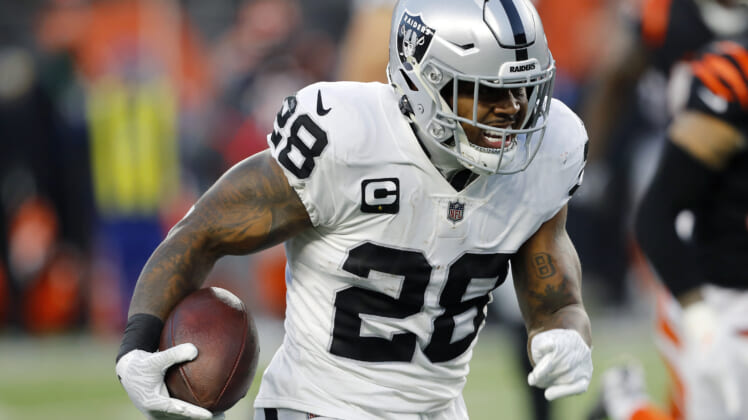
The Las Vegas Raiders went into the 2019 draft with three first-round picks because of trades that involved edge-rusher Khalil Mack and wideout Amari Cooper, netting top-32 draft slots from the Chicago Bears and Dallas Cowboys, respectively.
Unfortunately, they don’t have much to show for those moves.
With every passing year, Clelin Ferrell’s production trended in the wrong direction. As a rookie, he had some bright moments, battled COVID-19 in 2020 and then fell into a backup role behind Ngakoue this past season, playing just 24 percent of the defensive snaps.
Josh Jacobs finished eighth in rushing yards for the 2019 and 2020 campaigns and earned a Pro Bowl nod after the latter term. Though he struggled behind a rebuilt offensive line in 2021, the bruising tailback showcased his versatility, hauling 54 passes for 348 yards with some big gains in the screen game under former offensive coordinator Greg Olson.
Johnathan Abram isn’t a modern-day safety with passable skills in coverage. He’s an old-school thumper who will risk his body to make plays, and that’s exactly what’s happened in two of his three seasons. The 25-year-old finished his rookie and third terms on injured reserve with a shoulder injury.
Answer: Las Vegas Raiders exercise Josh Jacobs’ fifth-year option
Jacobs is the only one of the three 2019 first-rounders with a shot to play with the Raiders for five seasons.
For two terms, Jacobs had a bell-cow workload, averaging a little more than 18 carries per game. While he excelled in that role, the Raiders needed a 1B-type running back to spell him because of his minor injuries.
The coaching staff struggled to implement running back Kenyan Drake into weekly game plans and after he broke his ankle in Week 13, we saw Jacobs bounce back with a vengeance. The latter rushed for 129-plus-yards in two of the last four weeks of the regular season.
While Jacobs danced around a little too much early in the 2021 campaign, he ran with decisiveness behind a subpar offensive line down the stretch.
McDaniels worked with a stable of running backs in New England, but he’s also had a reliable lead ball-carrier in Damien Harris and Sony Michel over the past four years.
Vegas exercises Jacobs’ fifth-year option but don’t expect him to land a second deal with the team.
Related: Las Vegas Raiders roster review – Running backs
What’s the contract plan for Maxx Crosby and Hunter Renfrow?

Vegas acquired Maxx Crosby (fourth round) and Hunter Renfrow (fifth round) on Day 3 of the 2019 draft, so they have four-year contracts that don’t include the fifth-year option. As two of the team’s best players this past season, both can push for lucrative extensions in the offseason.
In 2021, Crosby earned second-team All-Pro and Pro Bowl honors with eight sacks, 42 quarterback pressures, 56 tackles, 13 for loss and seven pass breakups. He’s not a one-year wonder either. He earned Defensive Rookie of the Year votes. In three seasons, the Eastern Michigan product has led Vegas’ pass rush with 25 sacks.
Meanwhile, Renfrow eclipsed 604 receiving yards in back-to-back seasons and then broke out for 103 catches, 1,038 receiving yards and nine touchdowns, leading Vegas in all three categories this past year.
Despite the coaching staff changes, both players will play key roles for the Las Vegas Raiders in 2022.
Answer: Extend Crosby now, wait on Renfrow
Along with quarterback and offensive tackle, edge-rushers rank in the top three on the premium position scale. The best pass-rushers eventually earn big contracts. As a result, NFL teams might pay players at that position early because the price will rise after every new contract, which is how the Raiders should handle Crosby’s situation.
On the ascend, Crosby’s price tag will only become more expensive after comparable pass-rushers sign new deals or extensions. He’s clearly one of the best players at the position, so Ziegler shouldn’t waste any time paying him.
Looking at the AAV (annual average value) of the highest-paid edge-rushers, Crosby will easily command an extension north of $20 million with $65-plus million in guarantees. Kansas City Chiefs’ Frank Clark and Dallas Cowboys’ DeMarcus Lawrence have contracts that average $20.8 million and $21 million, respectively, and both had an underwhelming 2021 campaign.
As for Renfrow, he filled a major void within a decimated pass-catching group that lost wideout Henry Ruggs III after Week 7 (waived after his DUI resulting in death charge) and went through a chunk of the season without tight end Darren Waller, who battled ankle, knee and back injuries.
While Renfrow is an invaluable cog in the passing attack, he’s unlikely to match his 2021 receiving numbers with a full pass-catching unit.
When healthy, Waller likely remains the top target. Expect the Raiders to add a couple of wideouts between free agency and the draft. If they do, those players will take targets away from Renfrow as well, especially if one is a high-volume lead receiver.
If the Raiders pay Renfrow now, they would do so at an opportune time for him after he saw a ton of targets (128) out of necessity. His target total tied for 19th leaguewide. Once the front office fills in the gaps on the wide receiver depth chart, Renfrow will still produce but not at the same volume as he did this past season.
From a business standpoint, Ziegler would be wise to wait until the middle of the 2022 campaign to see where Renfrow’s production stacks up with a full pass-catching group compared to his 2021 term.
What’s next for Derek Carr?
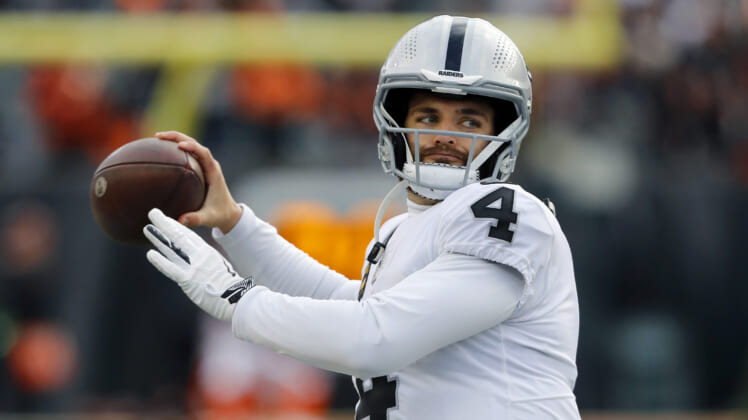
Here’s the red meat you’ve all waited to read about. What does the future hold for Derek Carr?
Ziegler and McDaniels won’t say this publicly, but Vegas probably drew their interest because of the stability at the quarterback position.
Carr isn’t an elite quarterback, but he’s arguably a top-10-12 player at the position and with a competent front office, an NFL team should be able to win with such a talent under center.
According to ESPN’s Adam Schefter, Carr marked the 2022 offseason as a time to approach the Raiders about an extension. Obviously, Ziegler and McDaniels knew this. Still, they decided to take jobs with a high opinion of the quarterback, per Michael Silver of Bally Sports:
Ziegler didn’t make any definitive statements about looming negotiations with Carr, and McDaniels offered a general statement that isn’t groundbreaking news:
Of course, they can win with Carr, but is Ziegler comfortable paying the quarterback what he’s asking for at the negotiating table?
What’s a realistic annual average salary for Carr and should the Raiders keep him at that price?
Related: Las Vegas Raiders roster review – Quarterbacks
Answer: Carr signs an extension, worth $34 million annually
Looking at the quarterback AAVs, Carr could command more than Carson Wentz ($32 million), Kirk Cousins ($33 million) and Jared Goff ($33.5 million).
With that said, Ziegler has holes to fill on the right side of the offensive line, wide receiver, defensive line and in the secondary if cornerback Casey Hayward Jr. follows Bradley to the Colts. If Carr wants a strong supporting cast, he must walk a fine line between getting what he’s worth and leaving his team enough resources to build around him.
Still, while playing a violent game in which one play can end a career, you won’t see many players taking a lowball offer whether they’re financially stable or not.
Barring a blockbuster trade for Aaron Rodgers or Russell Wilson, Carr starts for the Raiders in 2022 with a new contract. Don’t expect him to play on a deal without guaranteed money—that’s just poor business sense. If he tears up his knee in Week 1, the team can let him go and not owe him a dollar. He’s going to protect himself financially.
With the 2022 salary cap set for an increase to $208.2 million after a down year because of COVID-19-related losses, the Raiders may feel comfortable extending Carr on a deal that elevates his salary to about $34 million annually with $110-plus guaranteed. Though perhaps, the contract may have an out after two or three years in case the player or front office doesn’t believe the new marriage is headed in the right direction.
Maurice Moton covers the Las Vegas Raiders for Sportsnaut. You can follow him on Twitter at @MoeMoton.
Related: Discover who Sportsnaut has the Las Vegas Raiders selecting 22nd in our mock draft
